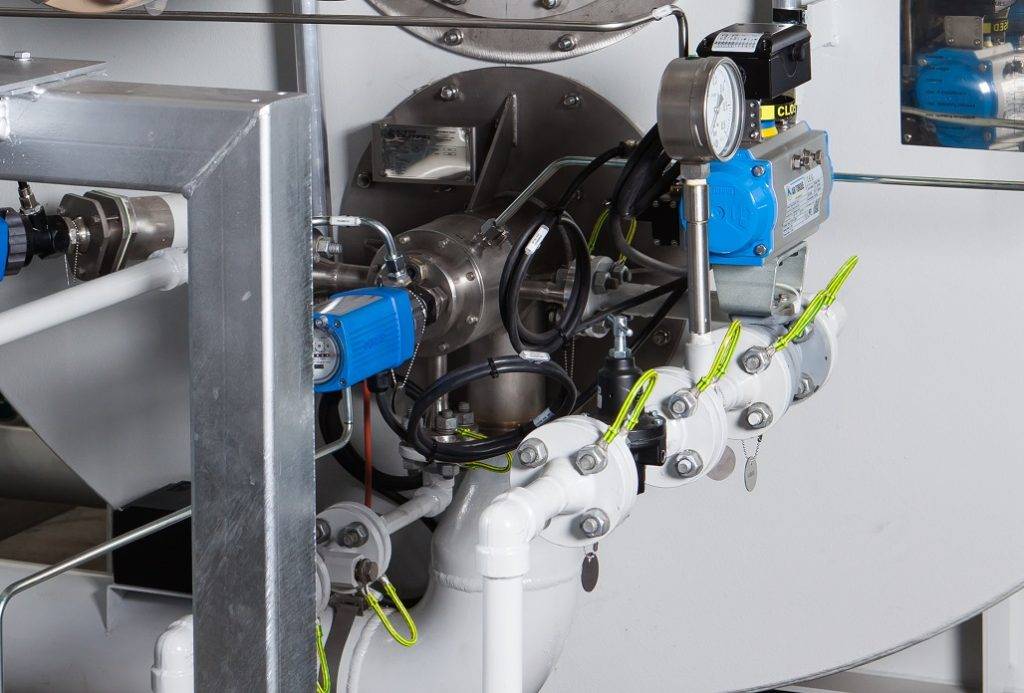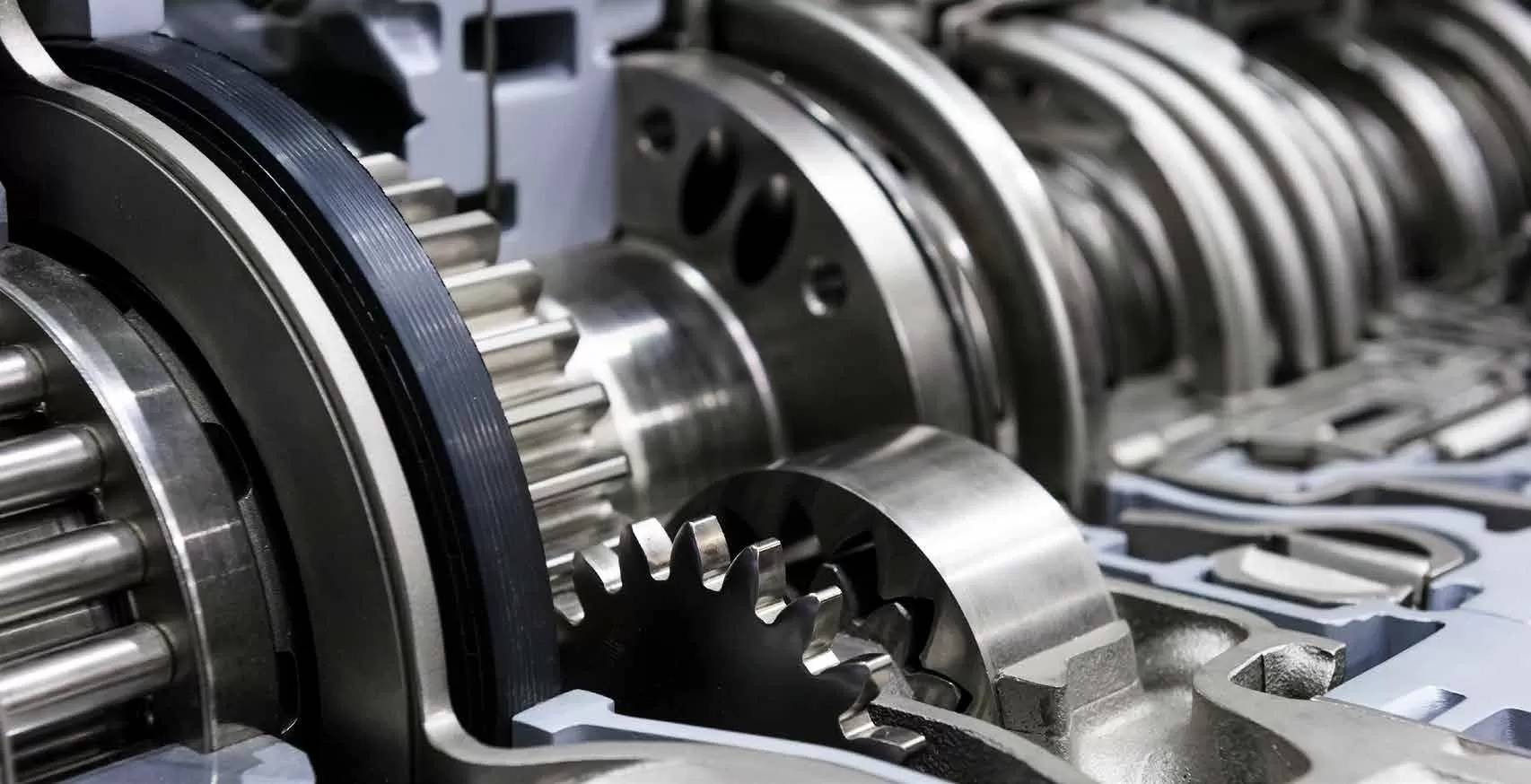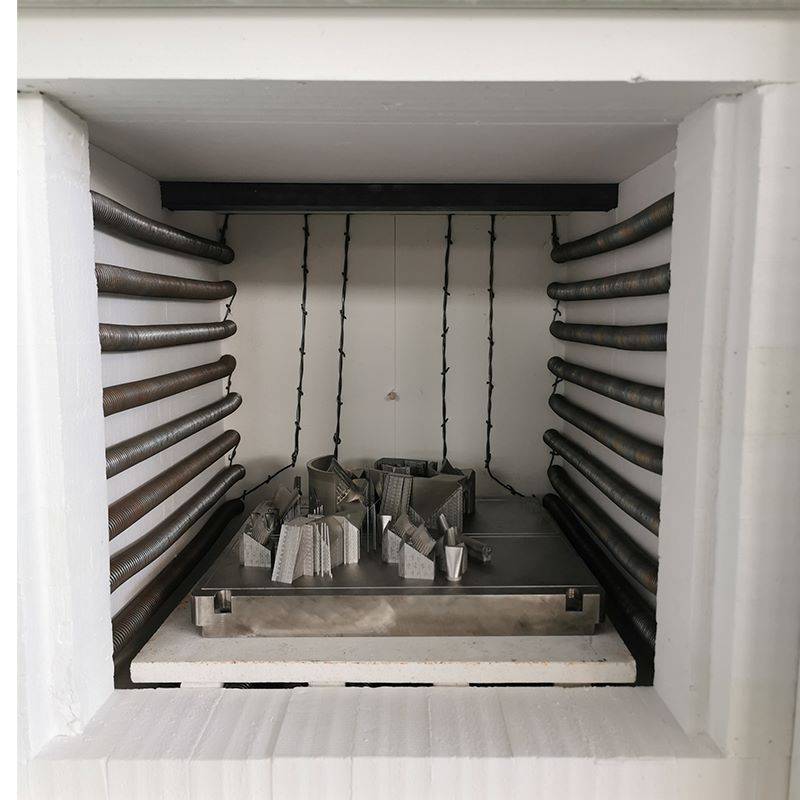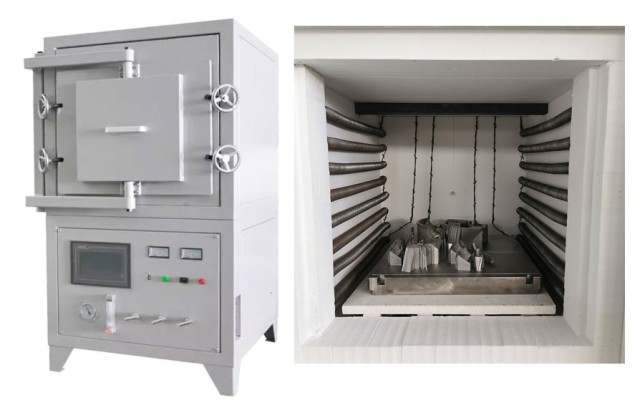Maintenance and Efficiency
Insulation and Sealing
Maintaining the integrity of the insulation around the tilting furnace is paramount for ensuring optimal efficiency. This process involves a meticulous inspection and, if necessary, replacement of various sealing materials. The primary components that require regular attention include:
- Sand Seals: These are critical for preventing heat loss and maintaining the furnace's internal temperature. Over time, sand seals can degrade due to constant thermal cycling, making their replacement essential.
- Fiberglass Tadpole Tape: This flexible material is used to seal joints and gaps, preventing heat leakage. Regular checks ensure that the tape remains intact and effective.
- Insulating Fiber Mats: These mats provide a significant layer of insulation, protecting the furnace structure from high temperatures. Damaged or worn mats should be promptly replaced to maintain efficiency.
To streamline this maintenance process, it is advisable to establish a routine schedule for inspecting these materials. This proactive approach not only enhances furnace efficiency but also extends the lifespan of the furnace, reducing long-term operational costs.

Simplifying Repairs with AI
The integration of AI software, such as QMULUS, into furnace maintenance routines represents a significant leap forward in ensuring both efficiency and process quality. This advanced technology is designed to meticulously monitor critical parameters, including gas flow, electrical current, and motor performance, providing real-time insights that are essential for maintaining optimal furnace operations.
By leveraging AI, operators can detect anomalies early and predict potential issues before they escalate into costly repairs. For instance, fluctuations in gas flow can be immediately flagged, allowing for prompt adjustments to prevent disruptions in the heating process. Similarly, monitoring motor data helps in identifying signs of wear and tear, ensuring that motors are serviced or replaced before they fail, thereby maintaining consistent furnace performance.
Moreover, AI-driven systems offer predictive analytics capabilities that go beyond reactive maintenance. These systems can analyze historical data to forecast maintenance needs, optimizing the scheduling of repairs and reducing downtime. This proactive approach not only enhances the reliability of furnace operations but also contributes to significant cost savings by minimizing unplanned maintenance activities.
In summary, the adoption of AI in furnace maintenance streamlines repair processes, ensures continuous efficiency, and enhances the overall quality of the heating and processing operations.
Operational Best Practices
Optimizing Pressure Settings
To ensure optimal performance and prevent operational issues, it is essential to maintain atmospheric furnace pressures slightly above ambient levels. Typically, this involves setting the pressure between 0.25 - 0.35 inches of water column. This range helps in several key areas:
-
Preventing Carbon Control Problems: By maintaining a slight positive pressure, you can avoid the ingress of ambient air, which could otherwise disrupt the carbon balance within the furnace. This is crucial for processes like carburizing, where precise control of carbon potential is necessary to achieve the desired material properties.
-
Minimizing Operational Fluctuations: A stable pressure setting reduces the risk of sudden changes in furnace conditions, which can lead to inconsistent heating and cooling cycles. This stability is vital for maintaining the quality and uniformity of the treated parts.
-
Enhancing Safety: A controlled pressure environment also contributes to the overall safety of the operation. It helps in managing the flow of gases and prevents the formation of hazardous atmospheres within the furnace.
In summary, fine-tuning the pressure settings within this range not only optimizes the furnace's performance but also ensures a safer and more reliable operation.
Multi-Burner System Safety
When it comes to ensuring safety in multi-burner combustion systems, the integration of advanced safety mechanisms is paramount. A multi-burner system is designed to distribute the combustion process across multiple burners, enhancing efficiency and reducing the load on individual burners. However, this distribution also necessitates robust safety protocols to manage potential failures.
A critical safety feature in these systems is the interlock mechanism, which automatically shuts down all burners if a single burner fails. This proactive measure prevents the escalation of a minor issue into a major safety hazard. For instance, if one burner malfunctions, the remaining burners could potentially overwork, leading to overheating or even catastrophic failure. By shutting down the entire system, the interlock ensures that the risk of fire, explosion, or other hazardous conditions is minimized.

Moreover, modern multi-burner systems often come equipped with real-time monitoring and diagnostic tools. These tools continuously assess the performance of each burner, providing operators with immediate feedback and allowing for timely interventions. For example, sensors can detect fluctuations in gas flow, temperature deviations, or abnormal combustion patterns, triggering the interlock system if necessary. This level of monitoring not only enhances safety but also contributes to the overall efficiency and reliability of the system.
In summary, the safety of multi-burner combustion systems is bolstered by the integration of interlock mechanisms and advanced monitoring tools. These features ensure that any potential failure is swiftly addressed, thereby maintaining the integrity and safety of the entire system.
Troubleshooting and Safety
Flame Detection and Safety
Flame detection systems are integral to managing fuel supply and preventing hazardous conditions during the combustion process. These systems are designed to monitor the presence of a flame in real-time, ensuring that any anomalies are quickly identified and addressed. By doing so, they play a crucial role in maintaining safety within the furnace environment.
One of the key components of a flame detection system is the flame sensor, which can be optical or ionizing in nature. Optical sensors detect the presence of a flame by measuring the light emitted by the combustion process, while ionizing sensors detect the electrical conductivity changes caused by the flame. Both types of sensors are essential for providing accurate and timely feedback to the control system.
In addition to flame detection, these systems also manage the fuel supply. If a flame is detected, the system ensures that the appropriate amount of fuel is supplied to maintain the combustion process. However, if a flame is not detected, the system immediately shuts off the fuel supply to prevent any potential hazards, such as an explosion or fire.
To further enhance safety, many modern flame detection systems are integrated with advanced safety devices. For instance, a multi-burner combustion system can be equipped with a safety device that shuts down all burners if one fails, thereby preventing any uncontrolled combustion. This proactive approach ensures that the entire system remains safe and operational at all times.
Moreover, regular maintenance and calibration of flame detection systems are essential to ensure their accuracy and reliability. This includes periodic checks of the sensors, control systems, and safety devices, as well as the replacement of any worn or damaged components. By adhering to these maintenance practices, operators can ensure that their flame detection systems are always ready to respond to any potential hazards.
In summary, flame detection systems are a critical component of safety in furnace operations. By continuously monitoring the combustion process and managing the fuel supply, these systems help prevent hazardous conditions and ensure the overall safety of the facility.
Carburizing Control
To effectively troubleshoot and control carburizing atmospheres, adhering to an 11-step test is essential. This meticulous process ensures that the carbon potential is accurately maintained, thereby preventing critical issues such as oxidation leaks and surface defects. The carbon potential, which should ideally range between 0.8% and 1.2%, is influenced by several factors:
- Type of Steel: Different steels require varying carbon potentials to achieve optimal results.
- Carburizing Temperature: The process temperature significantly impacts the carbon absorption rate and the final properties of the carburized layer.
Improper control of carbon potential can lead to a host of problems, including:
- Retained Austenite: Excessive carbon can cause the retention of austenite, which reduces hardness.
- Grain Boundary Oxidation: This can weaken the material and lead to intergranular cracking.
- Surface Cracking: High carbon levels can cause surface embrittlement and cracking.
- Low Surface Hardness: Inadequate carbon absorption results in subpar hardness, affecting wear resistance.
- Carbide Networking: Excessive carbide formation can degrade material properties.
In addition to enhancing surface hardness, carburizing significantly boosts wear resistance and fatigue strength. It is particularly effective for low-carbon steels (0.05% to 0.3% carbon) and can be applied to parts of varying complexity. Common temperatures for carburizing range from 1200°F to 1600°F, typically using endothermic furnaces with oil quench and air temper processes. Common materials include steels like 12L14, 1018, and 8620, each requiring specific treatment parameters to achieve desired outcomes.

By rigorously following the 11-step test and considering these factors, operators can ensure precise control over the carburizing process, resulting in high-quality, durable parts tailored to their intended applications.
Flame Safety and Purge
Ensuring flame safety is a critical aspect of operating heaters or ovens, especially in environments where combustible gases are present. The process of purging involves introducing a sufficient amount of air to the system to complete four air changes. This rigorous purging process effectively removes any residual combustible gases that may have accumulated within the heater or oven. By doing so, it significantly reduces the risk of an accidental ignition when an ignition source is subsequently introduced.
To achieve this, operators must carefully monitor the air flow and ensure that each air change is thorough and complete. This not only enhances the safety of the operation but also helps in maintaining the integrity and efficiency of the heating system. The meticulous approach to purging underscores the importance of preventive measures in ensuring a safe working environment.
System Maintenance and Documentation
Regular Furnace Checks
Regularly inspecting furnace liners is essential to maintain the integrity and efficiency of your air and atmosphere furnace systems. This routine check should focus on identifying signs of overheating and deformation, which can compromise the structural stability of the furnace. Overheating often leads to the softening and eventual deformation of the liners, which can disrupt the thermal equilibrium within the furnace.
Additionally, meticulous examination for cracks near welds is crucial. These cracks can serve as entry points for contaminants, leading to potential leaks and operational inefficiencies. By identifying and addressing these issues early, you can prevent more extensive and costly repairs down the line. A proactive approach to furnace maintenance not only ensures the longevity of your equipment but also enhances the overall efficiency and quality of your operations.
| Inspection Focus | Potential Issues | Preventive Measures |
|---|---|---|
| Overheating | Softening, Deformation | Regular Monitoring, Temperature Control |
| Cracks Near Welds | Leaks, Contaminants | Thorough Examination, Timely Repairs |
By integrating these checks into your regular maintenance schedule, you can significantly reduce the risk of unexpected breakdowns and ensure that your furnace operates at peak performance.
Documenting System Settings
Maintaining detailed records of critical system settings is essential for both troubleshooting and preventive maintenance. These records should include key parameters such as meter setpoints, fan/pump/motor frequency drives, and exhaust gas flap adjustments. By documenting these settings, technicians can quickly identify deviations from standard operating conditions, which can significantly aid in diagnosing issues.
For instance, maintaining a log of frequency drive settings for motors can help in detecting irregularities in motor performance. If a motor starts operating at a frequency that differs from its documented standard, it could indicate a potential issue such as bearing wear or electrical supply problems. Similarly, tracking exhaust gas flap adjustments can provide insights into the efficiency of the combustion process, helping to identify any blockages or leaks in the exhaust system.
Moreover, these records serve as a valuable reference during preventive maintenance activities. By comparing current settings with historical data, maintenance teams can identify trends and predict when certain components might need servicing or replacement. This proactive approach not only enhances the reliability of the system but also reduces downtime and operational costs.
In summary, meticulous documentation of system settings is a critical practice that ensures the smooth and efficient operation of air and atmosphere furnace systems.

Quality Assurance
Hardness Issues in Carburized Parts
To address hardness issues in carburized parts, it is essential to meticulously monitor and control several critical factors. Begin by scrutinizing the process data to ensure that the carburizing parameters align with the desired specifications. This includes verifying the temperature range, which typically falls between 1200°F and 1600°F, and confirming the use of appropriate equipment such as endothermic furnaces and oil quenches.
Next, evaluate the atmosphere generator and the furnace atmosphere. The atmosphere composition must be precisely controlled to achieve the optimal carbon potential, which is crucial for enhancing surface hardness, wear resistance, and fatigue strength. Common materials like Steel 12L14, Steel 1018, and Steel 8620 are often used due to their suitability for carburizing.
| Factor | Importance |
|---|---|
| Process Data | Ensures parameters align with specifications |
| Temperature | 1200°F to 1600°F; critical for carburizing |
| Atmosphere Generator | Controls atmosphere composition for optimal carbon potential |
| Furnace Atmosphere | Must be consistent to prevent hardness issues |
| Carbon Potential Controller | Ensures correct carbon levels for desired properties |
Preventing leaks in the system is another vital step. Leaks can disrupt the atmosphere composition, leading to inconsistent hardness and other quality issues. Regular inspections and maintenance of the furnace and its components are necessary to identify and rectify any potential leaks promptly.
By systematically addressing these factors, you can ensure that the carburized parts achieve the desired hardness and performance characteristics, thereby enhancing their durability and suitability for their intended applications.
Carbon Fixing Probe Troubleshooting
When encountering issues with the carbon fixing probe, it is imperative to avoid hastily removing it without a thorough diagnosis. Instead, employ a variety of diagnostic methods to assess the probe's functionality while it remains securely installed within the furnace. This approach not only ensures a more accurate assessment but also prevents unnecessary disruptions to the furnace's operation.
To effectively troubleshoot the carbon fixing probe, consider the following steps:
-
Visual Inspection: Conduct a visual check of the probe's exterior for any signs of damage or wear. This can include cracks, discoloration, or other anomalies that might indicate a problem.
-
Temperature Monitoring: Use thermocouples to monitor the temperature around the probe. Significant temperature variations can suggest issues with the probe's performance or placement.
-
Electrical Testing: Perform electrical tests to check the probe's resistance and ensure it is within the specified range. Deviations from the standard values can indicate potential malfunctions.
-
Atmosphere Analysis: Analyze the furnace atmosphere to ensure it is conducive to proper carbon fixation. This involves checking the carbon potential and ensuring the atmosphere is free from contaminants that could interfere with the probe's operation.
-
Historical Data Review: Review historical data from previous inspections and maintenance activities to identify any trends or patterns that might correlate with the current issue.
By systematically addressing these areas, you can more effectively diagnose and resolve issues with the carbon fixing probe, ensuring the continued efficiency and reliability of your air and atmosphere furnace system.
Related Products
- 1200℃ Controlled Atmosphere Furnace Nitrogen Inert Atmosphere Furnace
- Controlled Nitrogen Inert Hydrogen Atmosphere Furnace
- 1400℃ Controlled Atmosphere Furnace with Nitrogen and Inert Atmosphere
- 1700℃ Controlled Atmosphere Furnace Nitrogen Inert Atmosphere Furnace
- Mesh belt controlled atmosphere furnace
Related Articles
- Controlled Atmosphere Furnace: Comprehensive Guide to Advanced Heat Treatment
- Hydrogen Atmosphere Furnaces: Applications, Safety, and Maintenance
- The Silent Saboteur in Your Furnace: Why Your Heat Treatment Fails and How to Fix It
- Comprehensive Guide to Atmosphere Furnaces: Types, Applications, and Benefits
- Muffle Furnace: Unraveling the Secrets of Uniform Heating and Controlled Atmosphere

















